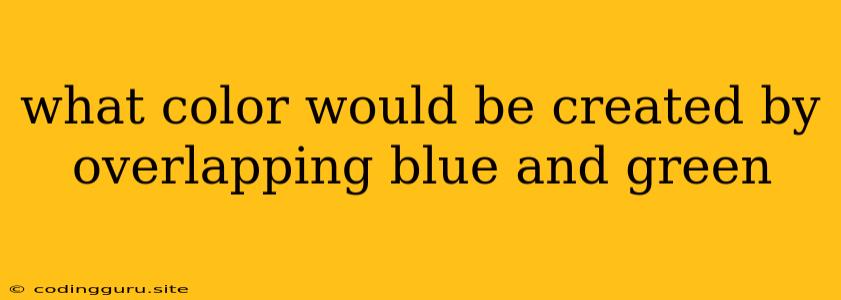What Color Would Be Created by Overlapping Blue and Green?
Have you ever wondered what color you get when you mix blue and green? It's a question that pops up often, especially when experimenting with art or trying to understand how colors work. The answer isn't as simple as it might seem, and it depends on several factors.
The Science Behind Mixing Colors
To understand the outcome of mixing blue and green, we need to delve into the science behind color mixing. There are two main ways to mix colors:
- Additive color mixing: This is the process of combining light sources. When you mix red, green, and blue light together, you get white light. This is how color television and computer screens work.
- Subtractive color mixing: This is the process of mixing pigments, like paints or inks. When you mix pigments, you are actually absorbing certain wavelengths of light and reflecting others.
Mixing Blue and Green Pigments
When you mix blue and green pigments, you are essentially subtracting wavelengths of light. This process usually results in a turquoise or teal color. The exact shade of turquoise or teal depends on the specific shades of blue and green used.
Example:
- Mixing a bright, vibrant blue with a light, grassy green will create a lighter, more pastel turquoise.
- Mixing a deep, rich blue with a dark, forest green will create a darker, more saturated teal.
The Role of Light and Shadow
The way light interacts with the mixed pigments also plays a role in the final color. For example, if you paint a turquoise object, it might appear different in direct sunlight compared to under a shaded lamp. The amount of light reflected by the pigment will affect its perceived color.
Mixing Blue and Green Light
If you are mixing blue and green light sources, the result will be a cyan color. This is because blue and green light are both primary colors in the additive color mixing system.
The Importance of Experimentation
The best way to figure out what color you get when you mix blue and green is to experiment! Gather different shades of blue and green paints, inks, or markers and see what happens when you mix them together. You might be surprised by the different shades of turquoise and teal you can create.
Conclusion
Mixing blue and green colors can result in a variety of shades, ranging from light pastels to deep, rich tones. The final color depends on the specific shades of blue and green used, the type of color mixing (additive or subtractive), and the way light interacts with the pigments. Whether you are an artist, a scientist, or just curious about color, understanding the basics of color mixing can help you better appreciate the beauty and complexity of the world around us.
